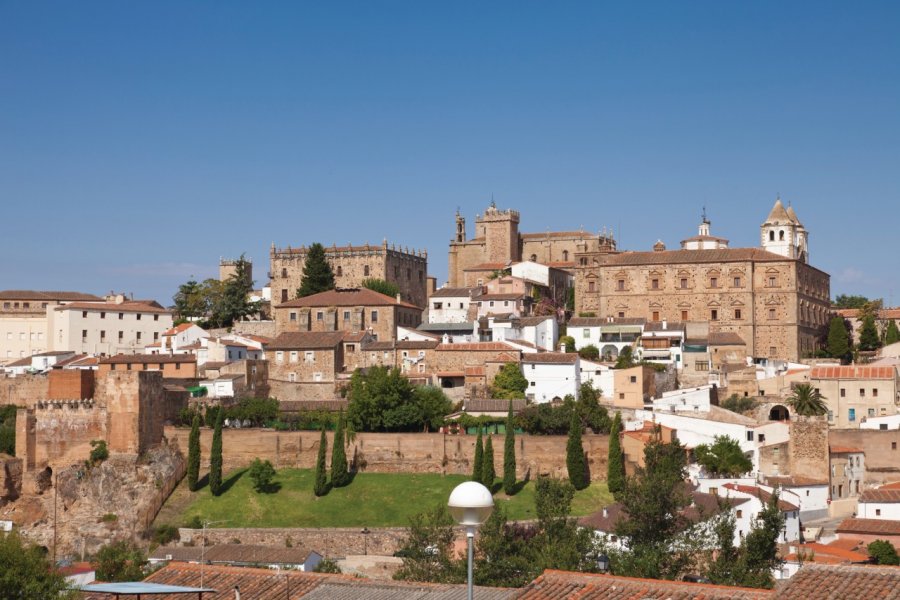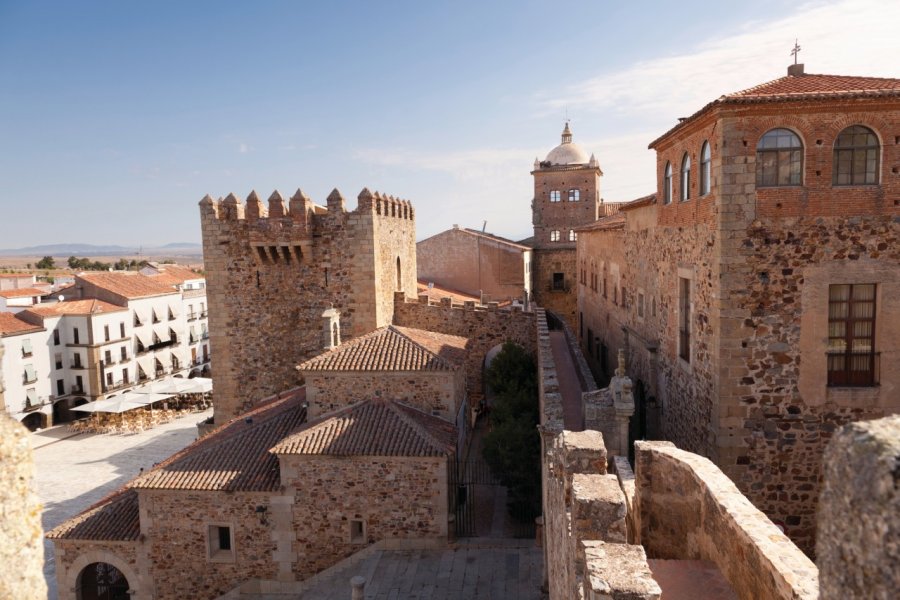Travel Guide Cáceres
Find an accommodation
Advertising
A World Heritage Site, this magical city of over 95,000 inhabitants offers a beautiful Roman-Arab-Christian architectural and cultural ensemble. Founded by the Romans, it was invaded by the Arabs to whom we owe, in the center, the towers and the Almohad walls that still encircle the barrio antiguo. Reconquered in 1227 by Alfonso IX of Leon, the city experienced its period of prosperity under the reign of the Catholic Monarchs thanks to the settlement of many merchants. Aristocrats and knights built sumptuous residences and palaces. Quarrelsome and thirsty for power and glory, they were forced to dismantle their towers in 1477, at the request of the Catholic Kings. Only the Torre de las Cigüenas (Tower of the Storks) remains today as a reminder of the splendor and exuberance of these residences. Its history is linked to one of the historical routes of the peninsula: the Vía de la Plata, a Roman road that connected Seville to Astorga and was used by pilgrims on their way to Santiago de Compostela. Pork derivatives and peasant recipes are the foundation of its culinary tradition, as are the excellent wines of Cáceres. Today, this provincial capital remains a pleasant and lively city because of its students. On February 2 and 3, the Procession of the Virgen de la Candelaria is held, which ends with the release of doves. On the day of San Blas, there is a folklore festival and a sale of ribbons in the image of the saint. Also noteworthy is the fact that from the Friday of Carnival, huge parties with parades delight residents and visitors.
What to visit Cáceres?
Advertising
Weather at the moment
Advertising
Organize your trip with our partners Cáceres
Transportation
Book your plane tickets
Car Rental
Boat rental
Accommodation & stays
Find a hotel
Holiday rental
Find your campsite
Tailor-made trip
Immersion travel
Services / On site
Activities & visits
Find a doctor
Find unique Stay Offers with our Partners
Pictures and images Cáceres
Other destinations nearby Cáceres
25 km away
100 km away












